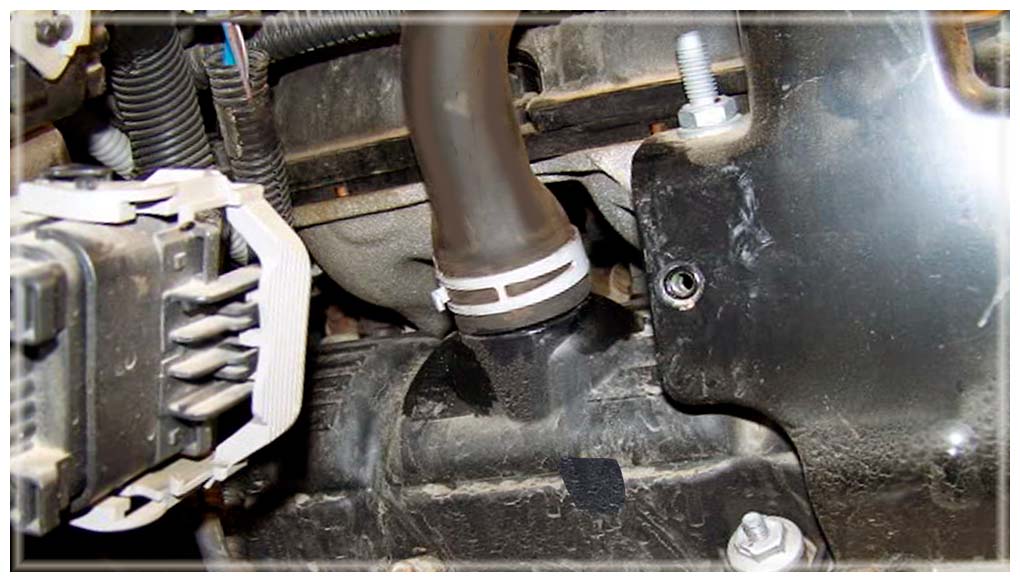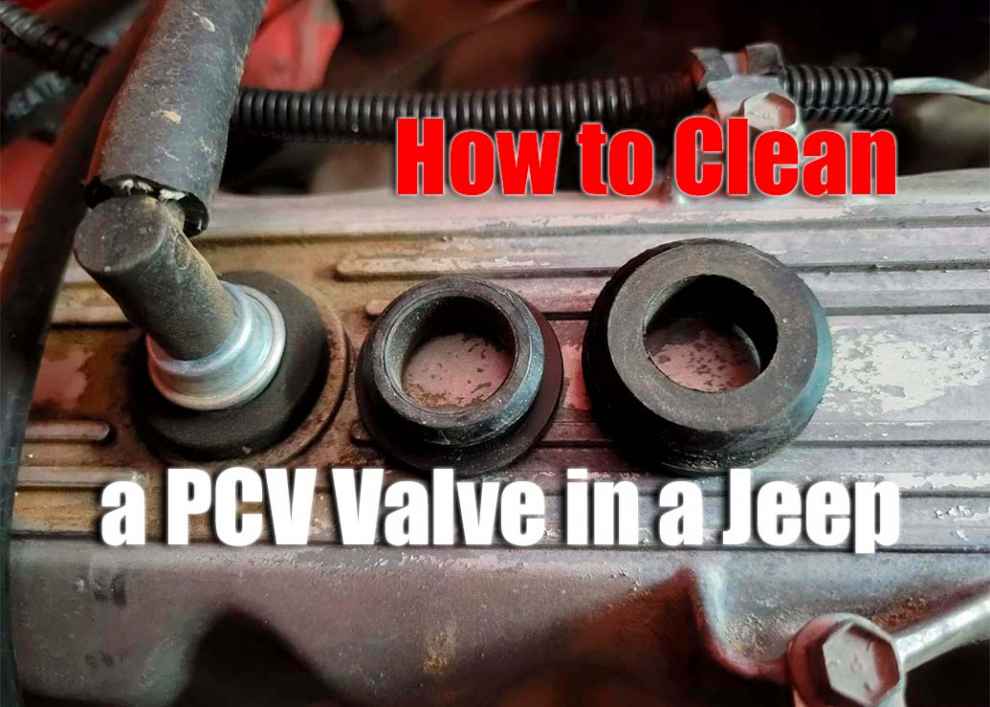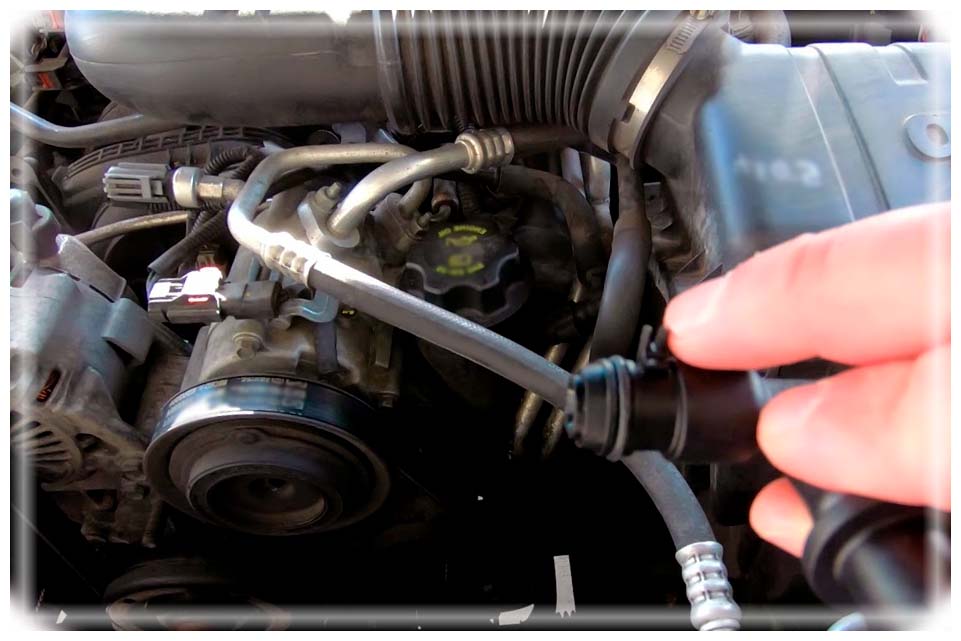The positive crankcase ventilation (PCV) valve is a critical component of your Jeep’s engine that helps to control the pressure inside the crankcase. It can cause issues such as increased oil consumption and poor fuel economy if it needs to be fixed. Cleaning your PCV valve regularly is important for keeping your engine running smoothly. This guide will teach you how to remove and clean the PCV valve in your Jeep so you can get back on the road.
What Is the PCV Valve in Jeep?

Why Should You Clean Your PCV Valve?
Cleaning your PCV (Positive Crankcase Ventilation) valve is essential for maintaining the health and performance of your vehicle’s engine. Over time, the PCV valve can become clogged or dirty, impeding its ability to regulate the flow of gases from the crankcase back into the intake manifold. This can lead to various issues, including increased oil consumption, reduced engine performance, and the buildup of harmful deposits. Cleaning the PCV valve regularly ensures that it operates effectively, allowing for proper ventilation and preventing crankcase pressure buildup. Cleaning the PCV valve helps maintain optimal engine efficiency, reduces the risk of engine damage, and promotes lower emissions. It is a relatively simple and cost-effective maintenance task that can go a long way in preserving the longevity and reliability of your vehicle.
Tools Needed for Cleaning the PCV Valve
Cleaning the PCV (Positive Crankcase Ventilation) valve requires a few basic tools to ensure a successful and thorough cleaning process. Here are the tools typically needed:
-
Screwdriver: A flat-head or Phillips screwdriver may be required to remove any screws or fasteners securing the PCV valve in place.
-
Pliers: Pliers can be useful for disconnecting clamps or retaining clips holding the PCV valve or its associated hoses.
-
Cleaning Solution: Depending on the level of buildup and contamination, you may need a suitable cleaning solution. This can include a carburetor cleaner, brake cleaner, or a specialized PCV valve cleaner.
-
Soft-bristled Brush: A small brush with soft bristles, such as a toothbrush or a dedicated brush for cleaning automotive parts, is handy for gently scrubbing any deposits or debris on the PCV valve.
-
Compressed Air: Compressed air can help remove loose particles and clean hard-to-reach areas of the PCV valve.
It’s important to note that the specific tools required may vary depending on your vehicle’s make and model, as well as the accessibility of the PCV valve. Before starting the cleaning process, consult your vehicle’s manual or an appropriate repair guide to ensure you have the necessary tools.
How to Remove and Replace the PCV Valve
Removing the PCV valve in your Jeep requires a few simple steps. Firstly, locate the valve and its associated hoses. You can typically find it on the engine’s upper part near the carburetor or intake manifold. Once you’ve located the PCV valve, remove any screws, fasteners, or retaining clips holding it in place.
Next, carefully disconnect any hoses attached to the PCV valve and use pliers to remove them from their housing. Now that the old PCV valve is removed, you can begin cleaning it with a suitable cleaning solution and a soft-bristled brush. Ensure to get into all its crevices and thoroughly clean away any residues or deposits. Once finished, use compressed air to blow out any remaining debris from hard-to-reach areas of the PCV Valve if necessary.
After cleaning your old PCV valve and ensuring it is free from debris, you are ready to re-install it into its housing. Ensure all connections are secure before replacing any screws or fasteners that hold it in place originally. Reconnect any hoses attached to your new or cleaned PCV valve before testing for proper operation by starting up your engine.
Tips for Cleaning and Maintaining Your PCV Valve
Cleaning your PCV valve is a simple yet important maintenance task that can help extend the life of your vehicle’s engine. Here are some tips to help you get the most out of your cleaning process:
-
Inspect the condition of your PCV valve before starting the cleaning process. If it looks too damaged or corroded, it may be time to replace it with a new one.
-
Wear protective gear such as gloves and safety glasses when cleaning and replacing the PCV valve to prevent debris from entering your eyes or skin.
-
Be sure to use an appropriate cleaning solution suitable for vehicle components, as certain solutions may cause damage to plastic or rubber parts inside the engine.
-
Make sure all connections are secure on the new or cleaned PCV valve before replacing any screws or fasteners and reconnecting hoses.
Conclusion
Cleaning the PCV valve in your Jeep is essential to maintaining your vehicle’s engine. You can perform this maintenance task quickly and easily by following the steps outlined in this guide. Always use protective gear when cleaning the valve and replace it if it looks too damaged or corroded. If done correctly, regularly cleaning your PCV valve will help keep your engine running at its best and protect against costly repairs down the line.

 Inspect the condition of your PCV valve before starting the cleaning process. If it looks too damaged or corroded, it may be time to replace it with a new one.
Inspect the condition of your PCV valve before starting the cleaning process. If it looks too damaged or corroded, it may be time to replace it with a new one.
Add Comment